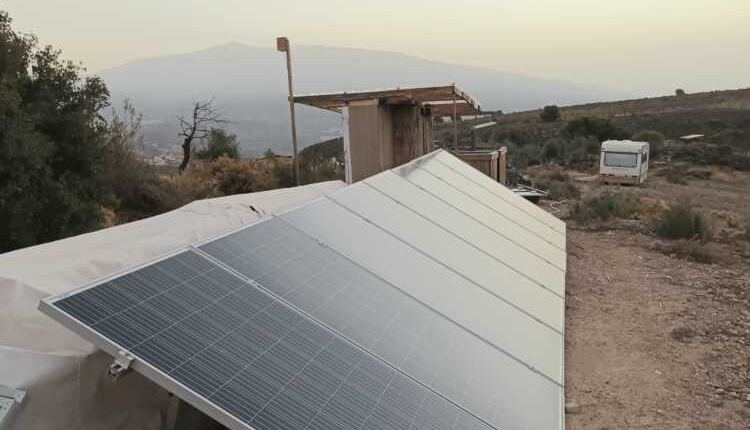Reduce your Ecological Footprint: Off-Grid Living
How could we be connected to the reef when we’re on the other side of the world, in Spain?
In March 2020, I witnessed a minor bleaching event on the southern Great Barrier Reef. My coral friends I had been visiting and falling more and more in love with every day for nearly three years, started to show signs of stress. One day they were fine, the next, they were looking a little pale.
What could I do about it, i asked myself as I floated helplessly above the (still) gorgeous reefscape?
The truth is, no matter how many coral surveys I did, or how much data I submitted, when I saw the darling reef before me, partly paling,
“there was absolutely NOTHING I could do in that moment… except cry in my mask.”
This is when I realised how truly CONNECTED everything is. How what we do on land, anywhere in the world, can impact coral reefs. So, what actions can we take to dissipate such extreme human impacts on the climate? I’m rolling with the “extreme” rather than “little” changes option, and have set out to discover, LIVE and share more of these solutions. Having just spent two weeks on an off-grid farm in Spain, below I share my exploration and learnings of some ways I can further reduce my ecological footprint.

Beautiful views from my bedroom on the farm

The Yurt, where I slept on the farm.
Here are 4 key areas I lived and learned about to reduce my footprint.
1. ENERGY
We had solar panels and storage batteries. Totally off-grid, there was no mains power or water supplies to the property. Totally self-sufficient (and free from crazy electricity price hikes!!!). I not only appreciated every bit of charging power, every little light, and a (sometimes) working fridge, but also learned lots about electricity capture and storage: cells, currents, converters, you name it. Life school, very valuable knowledge and skills to have.

Solar Panel Setup
2. WATER
“Did you know that 90% of the cost of plastic bottled water is the cost of the bottle itself? Think about it: bottled water companies don’t make water, they make plastic bottles!!”
Creating plastic bottles requires energy and oil, then they need to be transportes to a store where thirsty people can buy them. Let’s not even start to talk about the tiny percentage of plastic water bottles that actually get recycled! Enough ranting, you get my drift!
My first day on the farm, I helped set up a solar hot water system from an old recycled panel and storage system. We were able to fill up a lovely bucket of hot water to scrub our grubby selves at the end of a long hard day of work. We also set up a new water tank, excavating the ground with digging tools to ensure the tanks would capture rainwater redirected from the roof.
- No running water on the property meant showering “birdbath” style (with a bucket), a very specific dish washing strategy and close-to-essential teamwork to simply wash your hands!
- We collected supplies of precious drinking water from a fountain in town (that ran down and was captured directly from the clean mountain streams!).
3. DIET
90% of our food on the farm came from the work of our own hands, or at least locally. We bought a little rice, lentils and pasta – basic staples to compliment all the wonderful fresh produce we grew and harvested ourselves. We had mediterranean veggies galore: eggplants, capsicums, tomatoes, chillies. We feasted on melons and persimmons (a deliciously sweet mediterranean fruit something like a cross between a mangoe, plum and very juicy sweet tomatoe!). Sure, it didnt all look as perfectly squeaky clean, blemish-free and shiny as the “food” you find at the supermarket, but goodness the tomatoes REALLY tasted like tomatoes!!
Olives were harvested to pickle and make our own olive oil, and almonds banged off our trees to munch on and make almond milk. What a dream! Have you ever seen what almonds look like straight off the tree? Do you know the origins of what you eat?

Freshly Harvested Almonds
I had the bizarre reflection of how crazy it was to be SO excited about collecting all of our food with my bare hands. I realised how disconnected I have been to the source of my tucker my whole life. Here, there were no pesticides, no heavy machinery, no processing belts, no factories, no big trucks to transport supplies to the shops, and of course, no plastic packaging!!! Organic and fresh, from farm to table (and on many occasions from farm to mouth!!!).
4. WASTE
We of course composted all of our food waste, but that’s not all! We pooped into a dry composting toilet, and even our own poop was used as a valuable fertiliser (feel free to cringe if you like, but then take a moment to think about how much water and energy is wasted flushing and processing human waste!).

Dry Composting Toilet, built with 100% recycled materials

Dry Composting Toilet and Water Capture & Storage System
All kinds of building materials, old cupboards, windows, planks, pipes and pallettes that people had thrown out as “waste” soon became our treasure.
Sure, you might be thinking “WOW, that IS pretty extreme, I definitely couldn’t imagine myself living that way”. Even if you don’t choose to make any changes, I hope this sparks some reflection or ideas for some of the little (if not extreme) changes you can make in your every day life to feel more connected to your self, nature, food, water and everything we are so lucky to have readily available at our fingertips.
“As I travel around, I am astounded by how many people think the reef is dead, and I am on a mission to share the truth about the health of the reef (as witnessed with my own eyes!) as well as awareness of how crucial it is that we take many little (or extreme, if you so wish!) actions to change the fate of the natural world (coral reefs included)!





